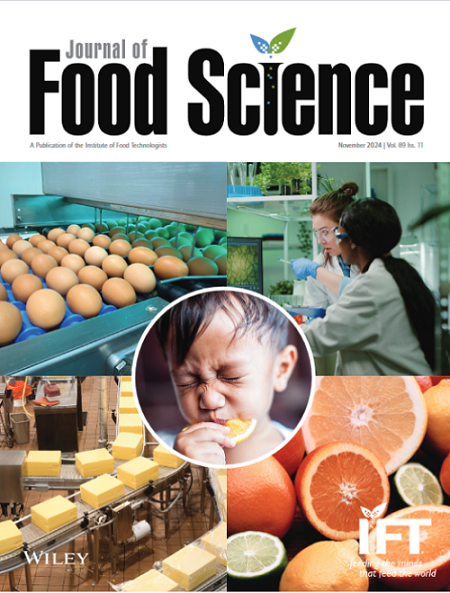Ultrasound as a novel separation technique in block freeze concentration applied to peppermint (Mentha piperita L.) infusion
Abstract
Ultrasound (US) has gained significant interest in the food industry, and its incorporation in block freeze concentration (BFC) for the separation step could be interesting due to the ability to extract and preserve bioactive compounds. This study aimed to investigate the use of the US method as a novel assisted technique in the block freeze concentration (US-BFC) process applied to peppermint infusion (Mentha piperita L.). Freezing procedures were performed at −20°C for 12 h, and the frozen samples were then transferred to an ultrasonic bath. Different US frequencies and durations were evaluated in the separation step. Concentration efficiency, concentration index, and solute yield were determined to identify the best conditions in terms of process parameters at three multi-stage cycles, focusing on physicochemical analysis, bioactive components, antioxidant capacity, and antibacterial assay of the concentrated phase. A frequency of 100 kHz and a duration of 3 min presented the highest efficiency (78.2%–56.0%), concentration index (4.1–38.6), and solute yield (0.4–0.1 kg concentrated solute/kg initial solutes). From cycle to cycle, US-BFC significantly increased the solutes as well as the total and individual bioactive content, confirming an increase in antioxidant capacity. Moreover, the concentrate fraction from the last cycle confirmed an antibacterial effect against Staphylococcus aureus and Listeria monocytogenes, achieving a minimum inhibitory concentration (MIC) of 29.9 and 5.5 µg/mL, respectively. The present findings signified that US-BFC can positively enhance the separation and concentration of peppermint infusion, without compromising its quality and nutritional properties.
Practical Application
This study shows that ultrasound can be coupled with block freeze concentration, and the combination serves an operative concentration/separation technology to increase a considerable amount of solutes without degrading the thermosensitive compounds of the concentrates. We expect that ultrasound-assisted block freeze concentration can be applied to other liquid foods, and thus, the concentrates can be used in the food, cosmetic, and/or pharmaceutical industries.

 求助内容:
求助内容: 应助结果提醒方式:
应助结果提醒方式:


